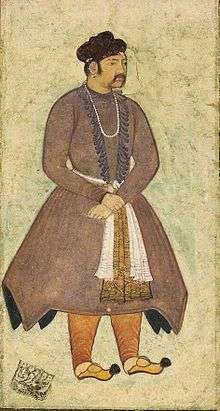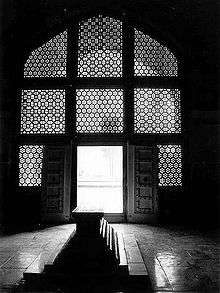Akbar's tomb




Akbar's tomb is the tomb of the Mughal emperor, Akbar and an important Mughal architectural masterpiece. It was built in 1605–1613 and is situated in 119 acres of grounds in Sikandra, a suburb of Agra, Uttar Pradesh, India.
History
The third Mughal Emperor, Akbar (1555–1605), commenced the construction of his own tomb in around 1600 as, according to Tartary tradition, one has to commence the construction of one's tomb during one's lifetime. Akbar planned the tomb and selected a suitable site for it. After his death, Akbar's son Jahangir completed the construction in 1605–1613.
Akbar was one of the greatest emperors in the history of India. However, during the reign of His great-grandson, Aurangzeb, the rebellious Jats under the leadership of Raja Ram Jat, ransacked the intricate tomb, plundered and looted all the beautiful gold, jewels, silver and carpets, whilst destroying other things. He even, in order to avenge his father Gokula's death, plundered Akbar's tomb, looted it and dragged Akbar's bones and burned them in retaliation. He was later sentenced to death by Aurangzeb.
The Tomb suffered a lot, until extensive repair was carried out by the British under Lord Curzon. The neighbouring Taj Mahal was also looted, and two of Agra's gates were taken away.
Location
It is located at Sikandra, in the suburbs of Agra, on the Mathura road (NH2), 8 km west-northwest of the city center. About 1 km away from the tomb, lies Mariam's Tomb, the tomb of Mariam-uz-Zamani, wife of the Mughal Emperor Akbar and the mother of Jahangir.[1]
Architecture
The south gate is the largest, with four white marble chhatri-topped minarets which are similar to (and pre-date) those of the Taj Mahal, and is the normal point of entry to the tomb. The tomb itself is surrounded by a walled enclosure 105 m square. The tomb building is a four-tiered pyramid, surmounted by a marble pavilion containing the false tomb. The true tomb, as in other mausoleums, is in the basement.[2]The buildings are constructed mainly from a deep red sandstone, enriched with features in white marble. Decorated inlaid panels of these materials and a black slate adorn the tomb and the main gatehouse. Panel designs are geometric, floral and calligraphic, and prefigure the more complex and subtle designs later incorporated in Itmad-ud-Daulah's Tomb.[3][4]
Architectural details
-
An unknown Lodi tomb in Akbar's Tomb complex
-
Front Façade
-
Circumferential Gallery around the cenotaph
-
View of South Gate from Interior
-

The Tomb of Akbar, c. 1905
-

Main entrance of Akbar's Tomb complex from inside.
-

Tomb ceiling details, Tomb of Akbar, Sikandra
-

Inlay panels on the South Gate
-

Inlay detail
-

Calligraphy over the entrance to the main burial chamber.
-

True tomb of Akbar, at the basement of the tomb.
-
Kanch Mahal, built by Jehangir, as a harem quarter later used as a hunting lodge.
-

Inside work of Akbar's tomb
References
- ↑ Remembering the Great Emperor The Hindu, Oct 27, 2003.
- ↑ "Fascinating monuments, timeless tales". The Hindu. Chennai, India. 22 September 2003.
- ↑ Akbar's Tomb Archnet.org.
- ↑ Akbar's Tomb Architecture of Mughal India, Part 1, Volume 4, by Catherine Ella Blanshard Asher. Cambridge University Press, 1992. ISBN 0-521-26728-5. p. 107.
Further reading
- Keene, Henry George (1899, Sixth ed.). "Sikandra". A Handbook for Visitors to Agra and Its Neighbourhood. Thacker, Spink & Co. p. 43. Check date values in:
|date=(help) - Havell, Ernest Binfield (1904). "Sikandra". A Handbook to Agra and the Taj, Sikandra, Fatehpur-Sikri, and the Neighbourhood. Longmans, Green & Co., London.
External links
| Wikimedia Commons has media related to Akbar's Tomb. |
Coordinates: 27°13′13.7″N 77°57′1.7″E / 27.220472°N 77.950472°E
